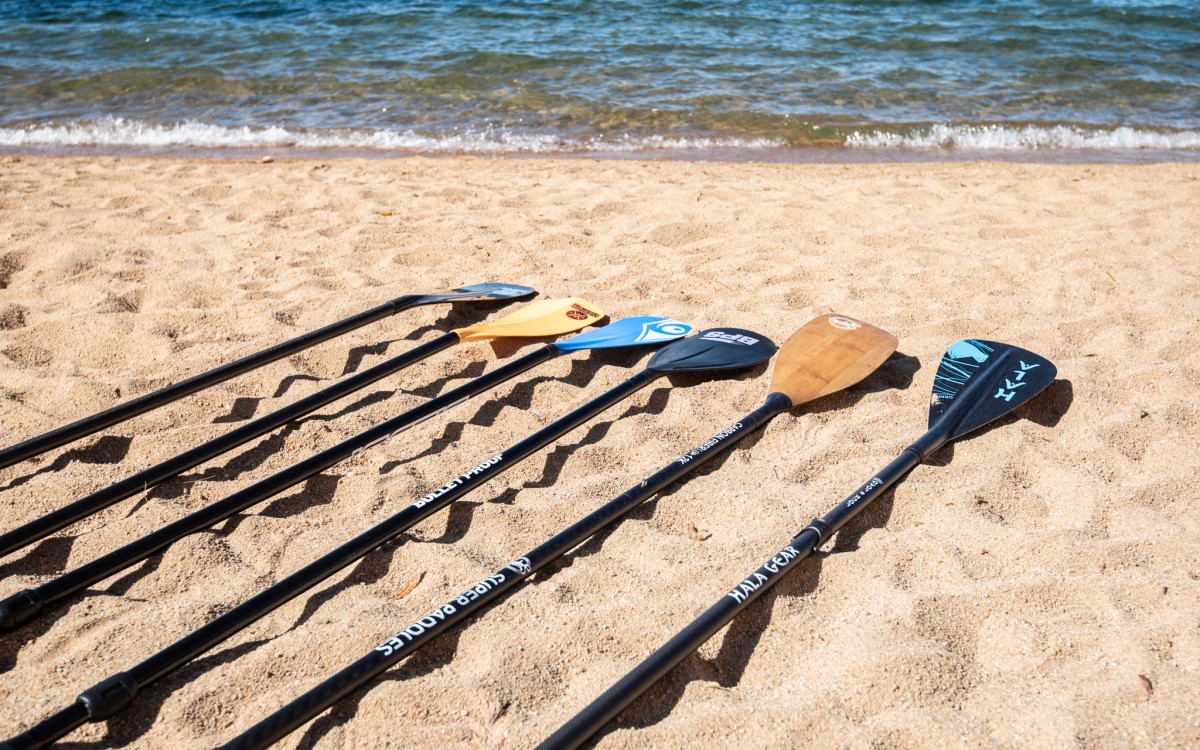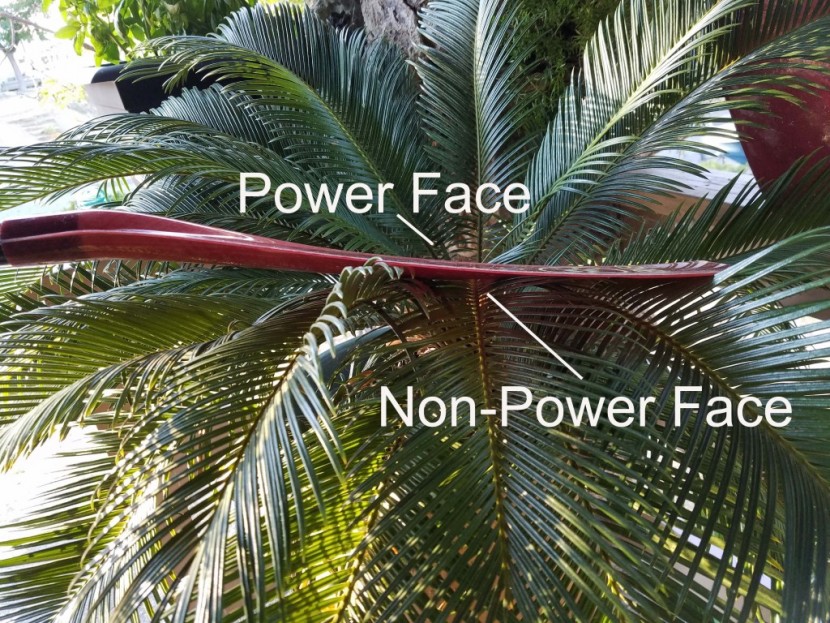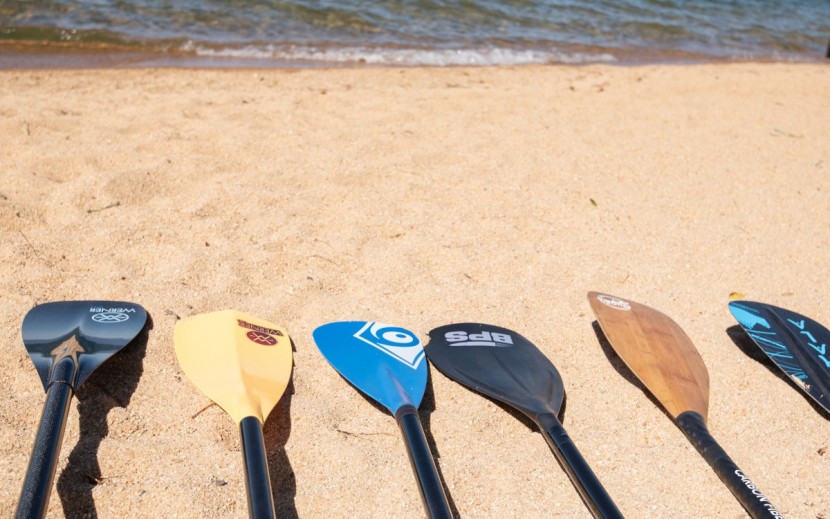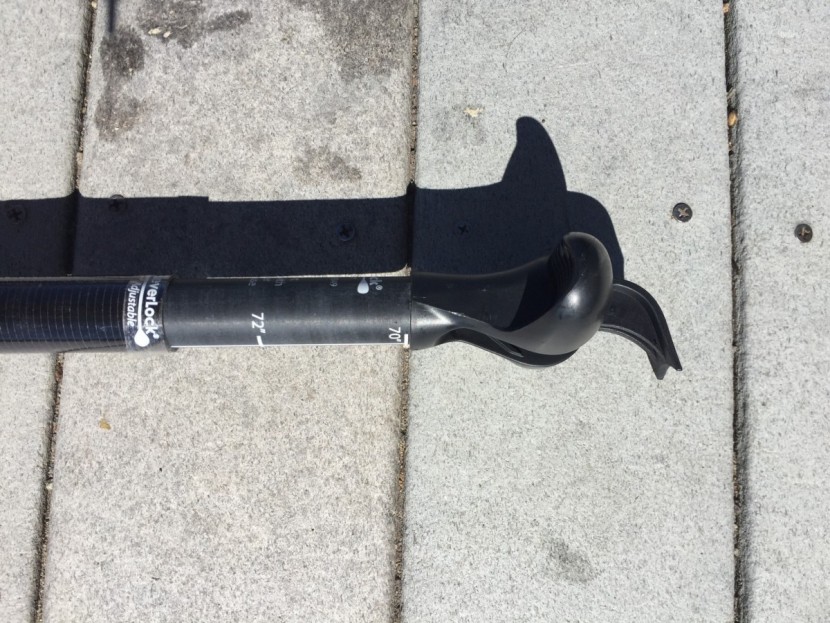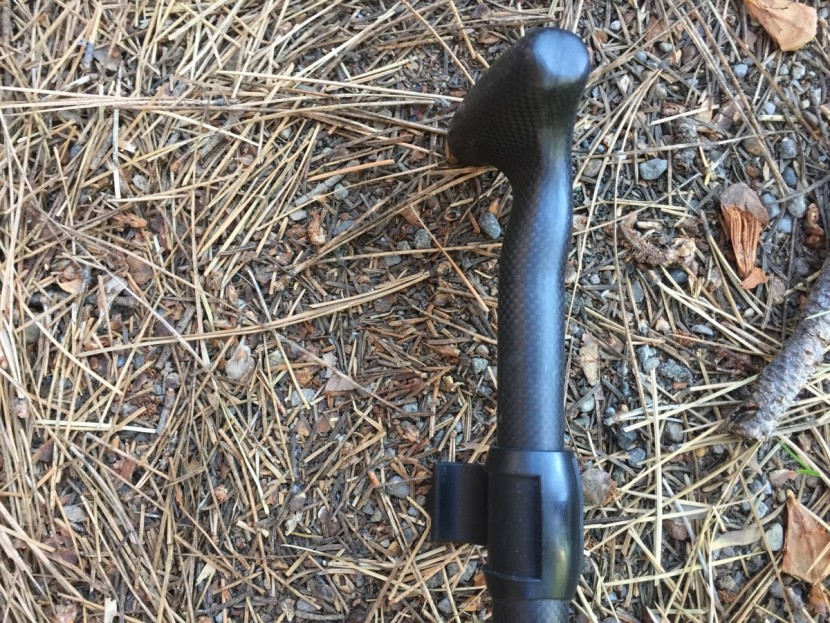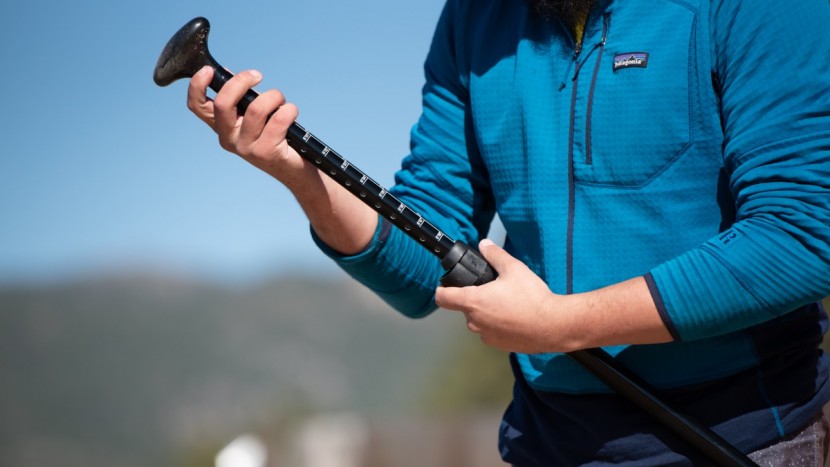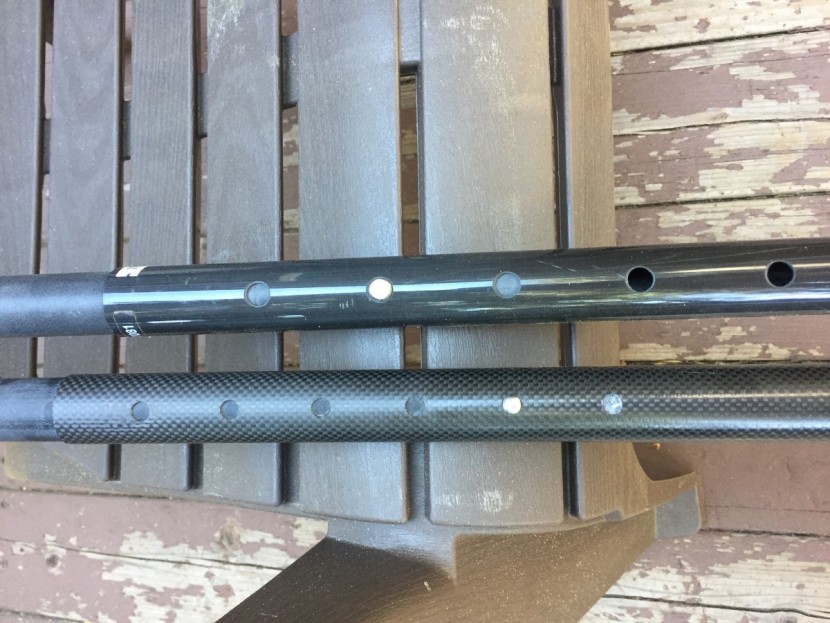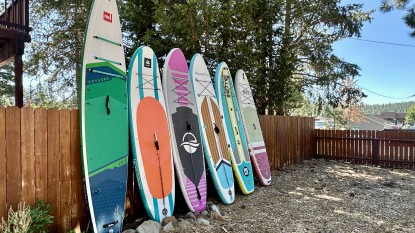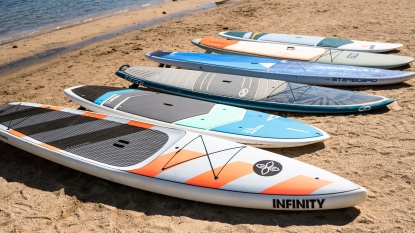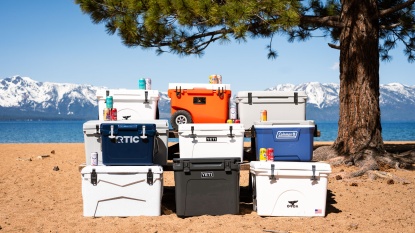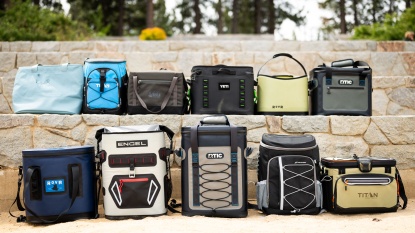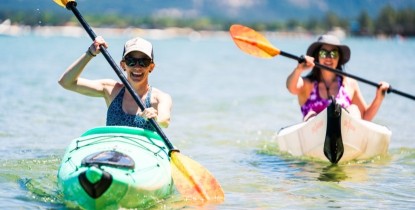Are you struggling to find the perfect adjustable stand-up paddle? With all of the different paddle types and materials, it can be tough to figure out which is the best SUP paddle for your needs and budget. We break down what to look for when shopping for a new paddle, what the pros and cons of the different locking mechanisms are, and whether you truly need to spend a ton of cash on a top-tier paddle.
Do You Even Need an Adjustable SUP Paddle?
There are many nice things about adjustable paddles. You can share them with your friends and family, which makes them a great option for families with paddlers of different heights. They're also a good choice if you are new to paddleboarding and not certain what length paddle you are most comfortable with. If you prefer a shorter length for choppy weather or surf paddling but a longer length for casual touring, you can do that with an adjustable model. Adjustable paddles can also be broken down into smaller pieces to make them easier to transport.
So what are the downsides of this kind of paddle? Adjustable paddles have more parts — particularly more moving parts — than one-piece SUP paddled. These systems and mechanisms introduce more failure points, often being the first thing to fail, and add non-trivial amounts of weight. It's hard to beat a single-piece paddle when it comes to paddling performance or weight but they severely lack versatility. In general, we would recommend all but the most serious stand-up paddleboarders stick with an adjustable model.
Step 1: What Size Paddle do you Need?
Before you purchase a SUP paddle, you need to determine the right size paddle for you. As a general rule of thumb, if you are going to use the paddle for surfing or in whitewater, you should add 4 inches to 8 inches to your height. If you're going to be touring or paddling for fitness or yoga, you should add 6 to 10 inches to your height to determine the right length for your paddle.
Most manufacturers will have a sizing guide for their paddles, which will allow you to identify which paddles will even work for your height. In addition to height, things like posture, paddling style, shoulder and arm size, strength, board size, and average water conditions can all affect what length of paddle will work for you. This amount of variability is one of the main reasons we suggest sticking with an adjustable model, as it lets you fine-tune the paddle to match your preferences, which we think vastly outweighs the slight reduction in durability and added weight over a one-piece paddle.
Step 2: Begin at the Blade
Next, it is important to understand the geometry of SUP paddles. Each model has two faces: a power face and a non-power face. The power face is the scooped side of the blade that does the pulling. It should be facing your body when you are paddling. If the blade has an arc, the rounded part of the arc should be facing away from your legs. If the blade has a dihedral groove, the pointiest part of the groove should be facing your legs.
The non-power face or the back face is the side of the paddle that faces away from you, and it is responsible for pushing and powering the reverse stroke. It is also the least pointy side of a blade that has a dihedral groove and the most rounded part of the blade if it has an arc shape. When selecting a blade type, you need to look at the blade's material, the size of the blade, its offset, and its shape
Blades generally come in small, medium and large/full sizes. Small blades are for smaller persons, medium blades will do well for those of an average build, and a large blade is meant for those who are larger and well-conditioned. The larger you are, the larger the blade you should handle. Keep in mind that the larger the blade, the heavier the paddle will be, but the more forward motion you will achieve. The smaller the blade, the easier it will be on your joints. These shorter blades also enable you to paddle with a quicker cadence.
Material
The paddles we tested have blades constructed from carbon, nylon or polycarbonate and fiberglass. Carbon is a common material that is light and cuts through water softly, but carbon paddles can be expensive. Nylon blades are a little more sluggish cutting through the water, but they cost less and are virtually indestructible. You don't have to worry about nicks, dings or scratches. Fiberglass blades are strong, light and cut through the surface of the water cleanly and easily, but they are relatively thin and can get nicked easily. Fiberglass models are usually priced reasonably. Carbon models are generally the most expensive but also the lightest.
Size
Blades generally come in a large ( ~ 91 sq in.) or small ( ~ 83 sq in.) size and either a teardrop or rectangular blade shape. Long rectangular blade designs are known to have a more gentle catch that is easier on the body. Larger blades give you more power per stroke but require more strength. Conversely, smaller blades move through the water easier but offer less power per stroke.
Offset
While researching the many types of paddles available, you might stumble across something called the
Dihedral
A blade dihedral is a vertical ridge running down the length
Step 2: Carbon, Fiberglass, or Alloy Shaft?
Paddle blades can be colorful and flashy, but the staff connecting it to your hands is important too. Composite shafts are usually more rigid than their metallic counterparts but can be more fatiguing to paddle and prone to damage. Alloy paddles flex much more, which can make them easier but less efficient to paddle. However, they are usually cheaper and much more durable.
Materials
Paddle shafts are constructed from a variety of materials, and each has its pros and cons. Most common paddle shafts (and the models we tested) are constructed from aluminum, fiberglass or carbon. They can also be made from Kevlar. Aluminum paddles are the least expensive, the heaviest and don't have a lot of flex, so they can be harder on your muscles and joints.
Fiberglass or carbon wrapped fiberglass composite shafts are lighter than aluminum, have a nice soft flex and aren't too hard on your pocketbook. Carbon constructions were the lightest models we tested. They have the most flex and a very nice feel to them, but they are not cheap. If you're purchasing a product for surfing, you will want it to have a bit of flex, so it's easier on your muscles and elbows. Kevlar has more flex than carbon and can reduce wear and tear on your body.
Shape
There are a variety of shaft shapes. Each is optimized for a different situation.
- Straight — A straight shaft paddle can be adjustable or non-adjustable (which is also called "fixed"). This is by far the most commonly found type of paddle and what we would recommend to the vast majority of people.
- Bent — A bend in the shaft adds a leverage point to increase comfort (especially in the wrist), control and cadence.
- Travel — A subset of straight paddles, a travel paddle breaks down into three smaller pieces, allowing it to easily fit in your car or as a piece of checked luggage.
Step 3: Pins, Levers, or Clamps?
The final thing to consider when shopping for a new paddle is the type of locking mechanism. Some are much easier and smoother to operate than others, especially when on the water.
LeverLock (Handle)
This system uses a locking mechanism that is a handle-like device, which allows for super quick adjustments. You simply lift up on the handle, which releases the tension on the blade, allowing you to adjust. The handle itself is flush with the handle of the paddle, which makes this locking mechanism extremely low-profile. Additionally, this mechanism has no visible screws and does not need to be tightened out of the box. This is our favorite type and we generally favor models that have it. However, it usually is found in top-tier models, so you may be out of luck if you are shopping on a budget.
Family Adjustable/Lever Lock (Shaft)
With the Family Adjustable, you pull the lever up, and it releases the tension, allowing you to move the handle up and down for adjustment. After you adjust your paddle to the desired length, you need to make sure that the blade is aligned with the handle grip. This system is nice because it usually has a straight line on one end of the shaft and an arrow on the other, making it easy to line up the handle with the blade. But note that there are moving parts to this system that could eventually break, and the measurement and line and arrow printing could eventually wear off.
TwinPin / Collar Clamp
To adjust the TwinPin, you pull the collar out which releases the adjustment pins so you can adjust the length. This system is nice because you don't have to worry about aligning the handle with the blade after you adjust the height. The downsides are that it can be heavy and it's hard to see where the pin is going, which can cause scratching to the paint on the shaft. It can also take a decent amount of force to pull the collar out, making it difficult to do on the water.
Performance Adjustable
With this system, simply push in the stainless steel pin and move the handle end to your desired height. This simple system is easy to use, automatically lines up the handle with the blade and is lightweight.
Conclusion
In summation, there are tons of configurations out there, and we know it can get confusing. Beginners should favor a paddle with a stronger construction (like fiberglass or alloy) and a blade size that correlates to their size and strength — a larger paddler should go for a blade with more surface area). More advanced paddlers should consider high-end carbon or composite models but remember, all of these paddles will get you from Point A to Point B without too much fuss, some might just be a little faster than others. Happy Paddling!

